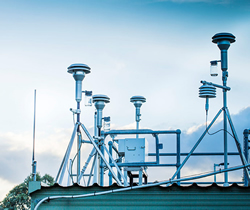 NSW has enjoyed its best year of air quality since monitoring began nearly 30 years ago, according to a report from the Department of Planning and Environment (DPE).
NSW has enjoyed its best year of air quality since monitoring began nearly 30 years ago, according to a report from the Department of Planning and Environment (DPE).
Acting Director of Climate and Atmospheric Science at DPE, Ruby Kan said the NSW Annual Air Quality Statement 2022 found air quality met the national health-based standards 100 per cent of the time at many monitoring stations across the State.
Ms Kan said that no days in 2022 exceeded the standards for all air pollutants in all Sydney regions, the Illawarra, Central Coast, Lower Hunter, Upper Hunter population centres and Southern Tablelands.
She said monitoring did not record any days with extremely poor air quality.
“Annual particle concentrations were the lowest since measurements began at almost all locations in New South Wales, in some locations that means as far back as 1994,” Ms Kan said.
“This report card shows air quality has improved greatly since the smoke and dust particle pollution caused by the 2019–20 Black Summer bushfires,” she said.
“Cooler, wetter weather due to the third consecutive La Niña climate event was a major factor as there were less bushfires, hazard reduction burns and windblown dust.”
Ms Kan said that excluding exceedances caused by sea salt spray, there were 18 days in 2022 when national standards were exceeded for either particles or gases at one or more metropolitan and regional centres, down from the 33 days recorded the previous year.
She said sea salt spray resulted in an additional 36 days above the national standards for particles.
“There were no days over the ozone and carbon monoxide national standards throughout the State, however there were exceedances of the daily sulfur dioxide and nitrogen dioxide standards on single days at one station each,” she said.
“Air quality is important to NSW residents and the Department tracks the levels of a range of pollutants, including PM10 and PM2.5 particles, plus ozone, sulfur dioxide, nitrogen dioxide and carbon monoxide gases.”
Ms Kan said real time air quality information could be accessed on the DPE website, including hourly readings, searchable locations and relevant health advice for each of the Department’s 95 air quality monitoring stations.
The NSW Annual Air Quality Statement 2022 can be viewed at this PS News link and real-time air quality information at this link.








